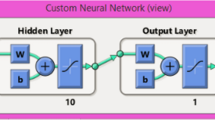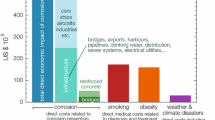Abstract
As far as concrete is concerned, durability distress such as alkali-silica reaction (ASR) and D-crack is recognized as a big-problem that rapidly degrades the performance. Particularly, in the case of surfaces, the deterioration speed is very fast because of the direct impact of the vehicle load and re-damage occurs quickly even if asphalt patching or concrete partial depth repair is performed. Asphalt overlay has been widely used as a rehabilitation alternative for slowing the distress progress. However, the overlay is required before the distress becomes severe to secure a good performance. The study is aimed to find an appropriate time of overlay and to predict the years of preparation time for the overlay. Through the road surface photography time series analysis, a model predicts how much damage will progress after a year according to the current condition. The appropriate distress area needed to be overlaid is quantified through the panel rating. Through the two results, it is possible to predict how much time remains until the appropriate time to overlay when the current pavement damaged area is known.
Similar content being viewed by others
References
Giannini E, Bentivegna A, Folliard K (2011) Coatings and overlays for concrete affected by alkali-silica reaction. Proceedings of the 4th international conference on concrete repair, September 26–28, Dresden, Germany
Hall KT, Correa CE, Carpenter SH, Elliot RP (2001) Rehabilitation strategies for highway pavements. NCHRP Web Document 35, Transportation Research Board, National Research Council, Washington DC, USA
Harrington DS (2014) Guide to concrete overlays: Sustainable solutions for resurfacing and rehabilitation existing pavements, 3rd edition. National Concrete Pavement Technology Center, DOI: https://doi.org/10.13140/RG.2.1.3106.4724
KEC (2018) Improvement plan for the selection process for paving improvement projects to improve user experience. Korea Expressway Corporation, Gimcheon, Korea (in Korean)
Kosmatka SH, Kerkhoff B, Panarese WC (2002) Design and control of concrete mixtures. Portland Cement Association, Skokie, IL, USA, 195–224
Kwak PJ, Kim TH, Lee JI, Jeong WY (2014) Alkali-silica reaction in concrete pavement at gimpo international airport — A maintenance case study using HMA overlays. The 2014 FAA worldwide airport technology transfer conference, August 5–7, Galloway, NJ, USA
NCHRP (2004a) Guide for mechanistic-empirical design of new and rehabilitated pavement structures, Part 2 Chapter 5. NCHRP Report 01-37A, National Cooperative Highway Research Program, Transportation Research Board, Washington DC, USA
NCHRP (2004b) Guide for mechanistic-empirical design of new and rehabilitated pavement structures, Part 3 Chapter 5,7. NCHRP Report 01-37A, National Cooperative Highway Research Program, Transportation Research Board, Washington DC, USA
Smith KD, Van Dam TJ (2019) Practices to mitigate alkali-silica reaction (ASR) affected pavements at airports. The National Academies Press, Washington DC, USA, DOI: https://doi.org/10.17226/25553
Suh YC, Jung JH, Kim HR, Kim ST (2015) Remodeling strategies for dealing with deterioration of expressway pavements. Final Report, Korea Expressway Corporation, Gimcheon, Korea (in Korean)
Acknowledgments
This study was conducted under research project “Development of High-Performance Concrete Pavement Maintenance Technology to Extend Roadway Life (Project No : 21POQW-B146691-04)” funded by the Ministry of Land, Infrastructure and Transport (MOLIT) and the Korea Agency for Infrastructure Technology Advancement (KAIA). The authors would like to thank the members of research team, MOLIT and KAIA for their guidance and supports throughout the project.
Author information
Authors and Affiliations
Corresponding author
Rights and permissions
About this article
Cite this article
Suh, Y.C., Lee, E.J. Development of Distress Progress Model for Determining the Appropriate Time for Overlaying Durability Cracks in Concrete Pavement. KSCE J Civ Eng 26, 1773–1781 (2022). https://doi.org/10.1007/s12205-021-0478-y
Received:
Accepted:
Published:
Issue Date:
DOI: https://doi.org/10.1007/s12205-021-0478-y




